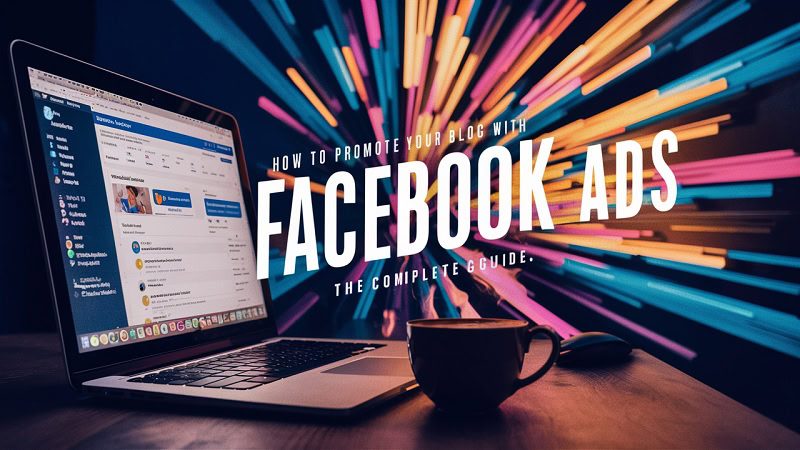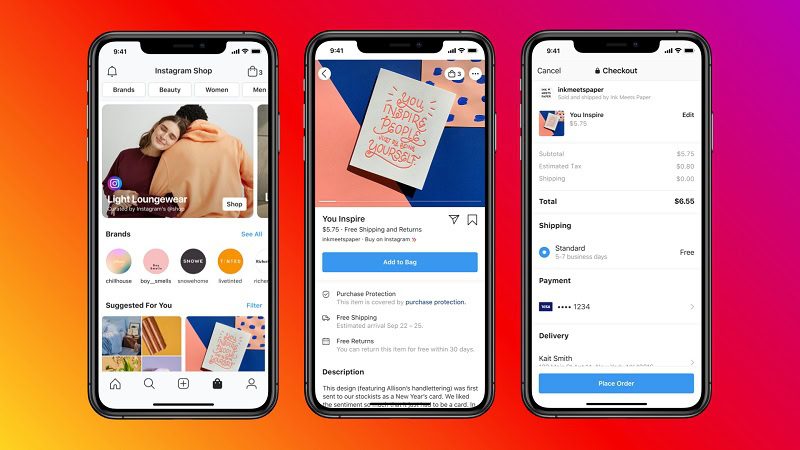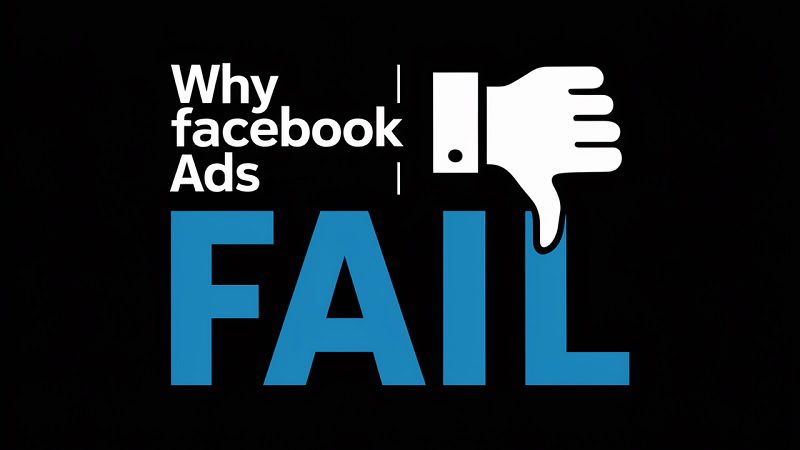Digital marketers are spoilt for choice when it comes to social media platforms.
Brands can launch ad campaigns on various social networks, and each platform offers unique audiences, ad formats, and marketing opportunities. Selecting the right advertising platform is a big decision, and can have an enormous impact on business performance.
Two of the biggest global social platforms are Facebook and Twitter.
Advertisers from around the world use both of these platforms to connect with their audiences, drive user engagement, and generate valuable sales.

Boost E-Commerce ROI: Download Our Free CPA & ROAS Calculator
But which social media partner is the best fit for your business?
Strap in, because it’s time to pit Twitter advertising against Facebook marketing in a clash of social media titans. Let’s explore the strengths and weaknesses of both platforms, and evaluate how they stack up against each other.
Running a wildly successful Twitter advertising campaign isn’t easy.
You need to master several different elements to generate positive results – everything from setting up your Twitter ads, to optimising your tactics, to accurately tracking performance.
(Oh, and that’s alongside managing your business.)
It’s safe to say that your plate is pretty full.
Well, we can lend a helping hand.
We’ve produced the complete step-by-step guide to Twitter advertising, covering every aspect of launching a profitable campaign.
Let’s get this show on the road, shall we?
As a specialist Twitter ads agency we can help you with your campaigns just get in touch for a free consultation.
Introduction to Twitter ads
Twitter ads are served throughout the Twitter platform but primarily appear in the home feed. They can be targeted towards granular audience segments using a variety of data points.
Twitter is a unique social media platform that places a very strong emphasis on organic conversations and interactions between users.
The app is designed to encourage speedy and frequent engagements, through replies, quotes, and Retweets. The Twitter feed is also constantly refreshed with new posts, allowing individuals and brands to react to news, share content, and exchange ideas.
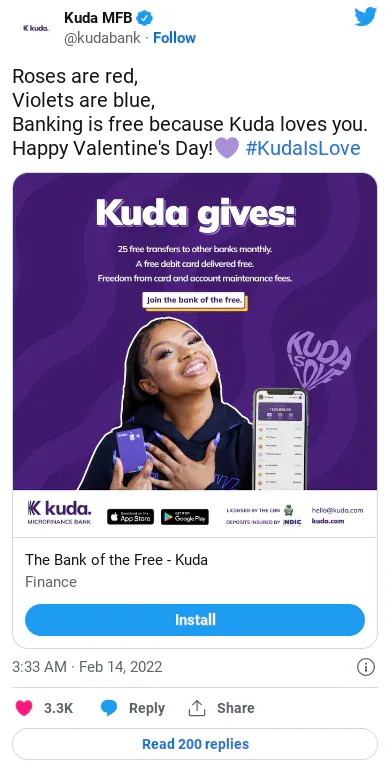
(Source: twitter.com)
Twitter ads function in a very similar way, enabling advertisers to tap into these real-time exchanges, capitalise on trending news, and spark their own conversations.
Since the majority of content also revolves around Tweets and replies, Twitter places slightly less emphasis on ad visuals than other social media platforms. Although high-quality images and videos are still important, these often take a backseat to ad copy.
Introduction to Facebook ads
Facebook ads are served across the Facebook network and are available in a wide range of different ad formats.
While Twitter ads are mainly delivered in the home feed, Facebook ads can be served in several different areas of the platform – for example, Facebook Messenger and Facebook Stories.
Facebook offers brands a versatile selection of ad types, which can help them to achieve numerous business objectives. However, this also means that marketers need to think carefully about the ad formats that will contribute most effectively to their goal.
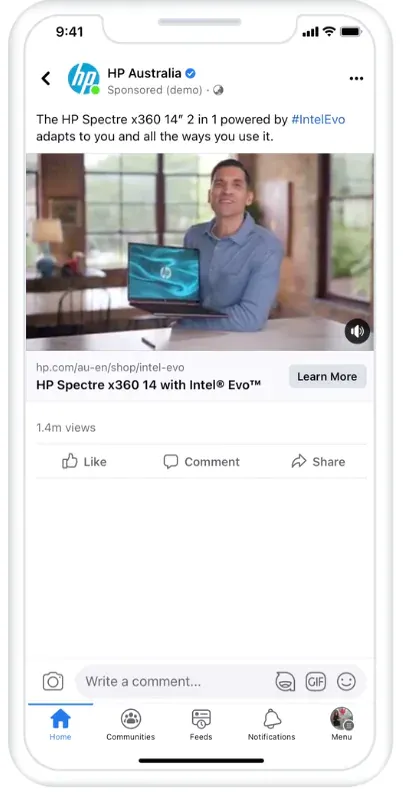
(Source: facebook.com)
All of these Facebook ad formats require a specific creative approach. Brands that tailor their ads to different formats will see more success than those that try and stretch generic assets across multiple placements.
Facebook also enables marketers to leverage a wealth of platform data to build granular audience segments.
This data can be extremely powerful for advertisers, and this is one of the biggest advantages of using Facebook advertising.
Head To Head: Twitter vs Facebook ads
Now it’s time for the main event.
Let’s get straight into the nitty gritty, and evaluate how Twitter ads and Facebook ads compare when it comes to a few key areas for paid social advertising.
Platform Reach
Reach is a very important metric for social media advertisers.
The larger the reach of an advertising platform, the more potential customers you have access to.
A substantial platform reach enables you to attract higher volumes of buyers, scale up your ad spend effectively, and achieve cost-efficient conversions.
So how does the reach of Twitter advertising compare to Facebook?

Facebook is a certified giant when it comes to audience reach. The platform attracts around 2.9bn monthly active users, which is a colossal number to wrap your head around.
Twitter, on the other hand, attracts around 450m monthly active users. While this certainly isn’t an insignificant number of users, Twitter struggles to compete with the Facebook platform when it comes to pure reach.
This round is pretty straightforward to call. If you’re looking for a network that can drive jaw-dropping reach and campaign scale, then Facebook is the clear winner.
Audience Targeting
We’ve already established the importance of platform reach for advertisers.
But the size of the audience is just one element to consider. If you want to run high-performing ad campaigns, you also need access to data-driven targeting options.
Smart user targeting is vital for reaching the right prospects within a larger audience. By building an effective target audience, you can increase the efficiency of your advertising budget and ensure that your ad impressions are reaching receptive users.
Let’s start off by reviewing Facebook’s audience targeting offering, which includes:
- Location targeting
- Demographic targeting
- Interest targeting
- Behaviour targeting
These Facebook ad targeting options are fairly standard, but utilise a lot of valuable audience data from the platform.
Now let’s take a look at the audience targeting options available on Twitter:
- Demographic targeting
- Audience targeting (includes Conversations and Keywords)
- Follower targeting (i.e. followers of your business account)
These options are very similar to those on Facebook, but there are a couple of unique twists (e.g. Keyword targeting, Conversion targeting) that separate Twitter from the competition.
Both platforms also allow brands to leverage Custom Audiences, which include pixel-based segments, Lookalikes, and retargeting strategies. These tactics can be ridiculously effective on both Twitter and Facebook, so the platforms are pretty evenly matched there.
This round is a little closer.
On the one hand, Twitter has various intelligent targeting options (e.g. Keywords, Follower Lookalikes) that play to the strengths of the platform. This allows brands to effectively tap into conversational topics and target users based on their interests and behaviours.
As a result, Twitter advertisers can create highly granular and relevant audiences that are super efficient.
On the other hand, Facebook’s targeting options could be seen as a little more generic – but the sheer size and scale of the platform are still insanely valuable for marketers.
Facebook offers unparalleled reach, enabling brands to achieve cost-efficient results and easily scale up their ad spend. Since the Facebook audience is so vast, Lookalike tactics can be particularly effective.
It’s difficult to name a clear winner in this category. Although Facebook marketing may have a slight edge due to its audience size, Twitter can still deliver powerful data-driven targeting.
Campaign Costs
It’s a close competition between our digital marketing combatants so far.
Platform reach and audience targeting are both hot topics, and there are plenty of nuances to consider between these networks.
But let’s move things along, and tackle our next key area.
How much is a marketing campaign going to cost on these platforms?
Price is a very important consideration for advertisers because it dictates how much you’ll need to invest to run an efficient campaign. For a small business or new business getting involved in social media advertising, this can be a dealbreaker.
Let’s begin with an overview of average costs for both Facebook and Twitter. We’ll take a look at a few of the most common and popular ad metrics that you’ll likely be focusing on throughout your campaigns.
Facebook Average Costs
Facebook ads work on an auction system, and advertisers can choose to bid for various actions and outcomes based on their objectives.
Facebook Cost Per Click – £0.87
Facebook Cost Per Thousand/CPM – £6.41
Facebook Cost Per Like – £0.95
Facebook Cost Per Download – £4.88

Twitter Average Costs
Twitter ads operate on a goal-based bidding system, meaning you’ll only pay for successful actions related to your campaign objective.
Twitter Promoted Tweet/Cost Per Action – £0.45-£1.78
Twitter Promoted Account/Cost Per Follow – £1.78-£3.57
Twitter Promoted Trend/Cost Per Day – £178,377
Comparing the costs of Facebook and Twitter can be tricky because both platforms operate on slightly different buying models.
Twitter, for example, works on a Cost Per Action for Promoted Tweets – these actions can include clicks, replies, and Retweets. Facebook works on a set Cost Per Click, so it’s not an entirely fair comparison.
However, across the board, Twitter advertising is generally more expensive than Facebook advertising.
The Twitter audience is significantly smaller, but can also generate sky-high levels of engagement, so it’s all about value for money. Ultimately, the winner here all depends on the results that you see from your ad campaigns.
If Twitter ads outperform Facebook ads for your business (or vice versa) then the costs will justify themselves.
Ad Format Selection
Cherry-picking the right ad formats is a major component of a successful paid social strategy.
Different ad formats can help brands tackle different business goals, diversify their creative messages, and experiment with new creative ideas.
So which platform is equipped with the ad formats you need to engage your target audience and crush your marketing objective?
Facebook provides advertisers with a wide range of different ad types that are served across the platform:
- Image Ads
- Video Ads
- Slideshow Ads
- Stories Ads
- Instant Experience Ads
- Carousel Ads
- Collection Ads
- Messenger Ads
The Facebook network has streamlined its ad format selection in recent years, but still offers brands an expansive range of placements.
Twitter has a more streamlined ad format offering, but there is still some scope for A/B testing and experimentation with Promoted Tweets:
- Promoted Ads
- Follower Ads
- Amplify Ads
- Takeover Ads
There are a few nuances to consider in this category, so there isn’t necessarily a cut-and-dried winner.
For example, while Facebook does offer a more versatile range of ad formats, this isn’t necessarily an advantage for every marketer.
If you’re an advertiser looking to run straightforward ad campaigns on a streamlined platform, then Twitter is the partner for you. However, if you have the creative capacity to produce multiple ad formats, then Facebook offers exciting opportunities in this space.
Ad Performance
Ad performance is a very important category for us to consider here – but it’s also one of the more difficult comparisons to make.
Facebook and Twitter both work on different advertising and buying models. Plus, each network releases different statistics and performance data.
However, there are some general comparisons that we can make between the two networks to help us paint a picture of average ad performance.
Campaign data suggests that engagement rates for Twitter ads can reach 1-3% – this is a very strong number, and significantly higher than Facebook’s average CTR of 0.119%.
Why is Twitter winning the engagement battle? Well, one reason could be the placement of Twitter ads.
These ads are almost always served in-feed, meaning they’re highly visible to Twitter users and easy to interact with.
Facebook ads, on the other hand, are often served in different environments (e.g. Stories, Messenger) outside of the main feed. This means that Facebook users may not always readily engage with them,
So, the straightforward design of the Twitter app may be leading the way in terms of clicks and engagements. But what about efficiency when it comes to reach?
The story is very different here. If we look at the average CPM, Facebook delivers a highly efficient £0.53 while Twitter lags behind at a pricey £3.13.
But before we rush to any hard conclusions, there are some caveats to consider.
Every advertiser is different, and every campaign is different. Your industry, for instance, will have a massive impact on your performance benchmarks and marketing costs.
The same applies to your target audiences, ad formats, and bidding strategies. There are many different factors at play, and delivery will never be identical for every advertiser.
The only way to crown a winner in this category is through experience. Test different platforms, analyse your results, and you’ll quickly identify the best-performing social network for your business.
Twitter ads vs Facebook ads – who wins?
We’ve covered a lot of performance data and platform insights there.
So after all of that analysis, who will emerge victorious? Are Twitter ads pulling ahead? Or will Facebook ads win the title of social media champion?
Well, there’s a short answer and a long answer to that question.
The short answer is that Facebook ads provide small businesses and new advertisers with a lot of promising marketing opportunities. The platform offers mind-blowing scale that can help to drive huge efficiency, and a range of different ad formats and audience types.
If you’re just getting started with social media advertising, then it’s difficult to beat Facebook as a beginner platform. With a smart strategy, you’ll be able to drive outstanding results.
(Now for the slightly longer answer.)
Facebook may be ideal for small businesses, but that certainly doesn’t mean that it beats Twitter in every category.
Twitter ads can still add tremendous value to your paid social strategy, enabling you to connect with Twitter users at scale, launch accurate targeting based on user intent, and smash your digital marketing objectives.
If you’re an established business with experience in paid social marketing, then leveraging both platforms is the optimal solution.
Twitter and Facebook both have a lot to offer advertisers, and if you can utilise both effectively, you’ll be in a strong position to achieve your goals and maximise your returns.
For brands looking to unlock the potential of both platforms, accessing specialist Facebook and Twitter marketing services from an experienced agency can be a game-changer.
Expert tips for paid social marketing
Whether you’re running Facebook ads or launching a new Twitter campaign, it’s important to follow best practices for paid social marketing.
Below are some proven strategies that will help you to maximise the impact of your ad spend.
Create content that’s native to the platform
Although you might be running campaigns across multiple social media platforms, you must tailor your creative approach to different networks and audiences.
A highly successful TikTok video, for example, might look very different to a LinkedIn or Instagram asset.
Research the type of content that’s popular on each platform, and adjust your creative strategy accordingly. The more native and authentic your ads feel, the more likely they are to drive clicks and conversions.
A/B test multiple creative variations
A/B testing is one of the best ways to refine your paid social strategy and improve ad performance over time.
Testing multiple creative assets can help you rapidly identify the content and messages that are resonating with your target audience.
You might discover that a certain headline is driving more engagements, or that a UGC-style video asset is generating the most conversions. Try to regularly refresh your creative approach and experiment with different ads to boost performance.
Unlock the power of Custom Audiences
Audience targeting is a critical part of paid social advertising – and Custom Audiences are some of the most powerful segments available to marketers.
The types of Custom Audiences available to you will vary between platforms, but they usually involve customer lists, pixel-based targeting, and retargeting strategies.
Try and incorporate Custom Audiences into your plans wherever possible. Make sure that you have the correct data sources and pixels set up for a seamless launch.
These data-fuelled audiences can deliver some of the most efficient results in the world of paid social, so be sure to take full advantage of them!
Useful resources for paid social advertising
Keen to learn more about paid social marketing?
Below are some handy resources that are packed with practical information and expert insights on running social media ad campaigns.
Both Facebook and Twitter can be invaluable tools for paid social advertisers.
The best way to establish the right platform for your business is to experiment with both networks.
Every brand is unique, so you’ll need to try different strategies and test multiple audiences to identify the most profitable opportunities for your business. Best of luck!



